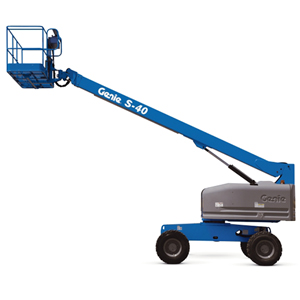Construction projects frequently employ aerial lifts, which enable workers to securely complete a variety of tasks above ground. However, according to The Center for Construction Research and Training, aerial lifts are also a significant contributor to construction accidents in the country. This is why boom lift safety checklists are necessary on all job sites.
What Is a Safety Checklist for Aerial Lifts?
To assist employees in avoiding many of the most prevalent workplace hazards, the Occupational Safety and Health Administration provides safety standards. The likelihood of an accident occurring increases dramatically if these recommendations are not followed. Always put the safety of the workforce first. A checklist for aerial lift safety can assist workers in making safety a top priority every day. Workers are empowered to carry out tasks in the safest manner when they have a checklist at their disposal.
What Is Listed on an Inspection Checklist for an Aerial Work Platform?
You may comply with OSHA safety requirements and avoid accidents by using an aerial lift safety checklist. Most importantly, this checklist aids in the safety of both you and your coworkers while at work. Let’s now examine the items on a scissor lift safety checklist:
- Use A Pre-Inspection Checklist for an Aerial Boom Lift: Every aerial lift job should begin with a lift check to help avoid problems being created by broken or malfunctioning parts. All fluid levels, wheels, tires, batteries, chargers, lower-level controls, horns, gauges, lights, backup alarms, and other warning devices, as well as steering and brakes, should be inspected together with the vehicle and the lift.
The operating and emergency controls, personal protective equipment, air, hydraulic, fuel, and electrical systems, fiberglass and other insulating components, missing or difficult-to-read charts, warnings, or instructional markings are additional lift components that need to be inspected. Outriggers, stabilizers, and other similar structures, Loose or missing pieces, and guardrail systems are examples of mechanical fasteners and locking pins. Keep in mind that even a small flaw can result in serious issues and an accident. Work should not start until damaged or missing parts have been fixed or replaced, as discovered during a scissor lift inspection.
- Job Site Factors: Every job site has safety hazards, which is why every scissor lift safety checklist should involve a comprehensive evaluation of a work area. Before work can start, all potential hazards must be identified and eliminated. These consist of shaky terrain, a lowered ceiling, ground features, live electrical cables, obstacles in the air, severe weather conditions, and nearby coworkers at the workplace.
You must take care of the aforementioned risks before they get out of control because they can make it challenging to maintain a safe job environment. Of course, you may learn the skills required to quickly eliminate job site hazards if you sign up for a boom lift safety training course.
- Safety From Falls: Aerial lift employees must have the appropriate fall protection gear, according to OSHA. Workers should also receive sufficient training, so they know how to use their safety gear. By limiting worker movement, fall prevention equipment is intended to prevent falls. Some can even stop falls in their tracks. Use an aerial lift safety checklist to confirm that everyone has the appropriate fall protection equipment before beginning an operation. It’s essential to have an aerial lift safety checklist that takes fall protective gear into account. With this checklist in your possession, you’ll be prepared to stop boom lift falls both today and in the future.
- Employees are outfitted with body harnesses, restraint belts, and lanyards.
- These are fastened to a boom or bucket point.
- These are not tethered to surrounding poles or structures by a belt.
- All entrance gates are closed.
- On a platform or bucket floor, workers stand solidly.
- The guardrails are not climbed, leaned on, or crossed by workers.
- In the working posture, there are no ladders, planks, or other tools.
- Overhead Protection: Any barrier in the air above a vehicle can raise the likelihood of an accident. Crushing injuries, electric shocks, and forceful impacts are all potential outcomes. Accidents like tip-overs can also result by slamming against an obstacle with a platform or slope on shaky ground. Fortunately, you may take a variety of steps on your project site to enhance aerial lift overhead protection, such as:
- Assume that every power line is live.
- Keep a minimum of 10 feet clear of all cables and electrical lines.
- Deactivate live electricity lines in a construction area.
- Watch out for anything hanging over your head.
- Avoid positioning the aerial lift between objects in the air.
- Use wheel chocks on sloped surfaces after setting outriggers on pads or a flat surface.
- Cones and signage should be used to warn of the work zone.







